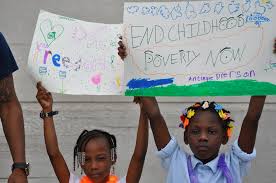Children in Poverty Less Likely to Participate in Sports, Gifted Programs
Mike Seals - September 23, 2020 10:23 pm

Even Short-Term Spells of Poverty Lower School-Aged Children’s Involvement in Extracurricular Activities
What impact do short or temporary spells of poverty have on children?
Children living in families at least five times above the poverty level for the entire year were more likely to be in a gifted program than all other children among children ages 6 to 11 and ages 12 to 17.
Even short-term bouts of poverty may be associated with fewer opportunities to excel in and out of school, including less involvement in extracurricular activities such as sports or music.
The longitudinal nature of the Survey of Income and Program Participation (SIPP) is uniquely qualified to explore this topic, given that each survey interview collects information for the entire previous calendar year. The analysis below uses the recently released 2018 SIPP data.
There are four poverty status groups:
- Children in poverty all months in the year were — at least in the span of the previous year — consistently living in poverty.
- Children in poverty some, not all, months in the year were in poverty at least one month, but not more than 11 months in the previous year.
- For comparison, children 500% of poverty or higher all months in the year reflects children who were consistently far from the poverty line.
- The remaining children were not in poverty at any point in the previous year, but were also not 500% of poverty or higher the entire year (Neither in poverty nor 500% of poverty).
We use three measures from the child well-being section of the survey: whether a child is in a gifted class, plays a sport, or takes lessons, such as music or dance.
We show results for two age groups: 6- to 11-year-olds and 12- to 17-year-olds, since the transition from elementary, to middle, to high school presents varying opportunities for extracurricular activities and gifted programs.
Looking at the association between poverty and these well-being outcomes by age allows us to investigate whether the relationship between them may be more pronounced for a particular age group.
How Many Children Live in Poverty
Of the 24.1 million children ages 6 to 11 in 2018, 3.8 million (15.7%) were in poverty for the entirety of the previous year, and an additional 2.7 million (11.3%) were in poverty for some, but not all, months in the previous year.
Among children ages 12 to 17, 3.4 million (13.5%) were in poverty every month in the previous year, and 2.4 million (9.7%) were in poverty some of the months.
At the other end of the income spectrum, 4.6 million children ages 6 to 11 (18.9%) and 5.8 million children ages 12 to 17 (23.1%) were in families that were at least five times the poverty level for the entire year.
Poverty and Child Well-Being
In both age groups (6 to 11 and 12 to 17), children in poverty only some months were more likely to be in a gifted program than children in poverty all months in the previous year.
Among children 6 to 11, 14.3% of those living in poverty only some months were in a gifted program, compared to 8.8% of children living in poverty all months.
For children ages 12 to 17, 23.8% of children in poverty some months were in a gifted program, compared to 15.6% of children in poverty all months.
Also for both age groups: enrollment in a gifted program for children who were in families that were in poverty some, but not all, months in the previous year did not differ significantly from children who neither were in poverty nor were five times above the poverty line the entire year.
Children living in families at least five times above the poverty level for the entire year were more likely to be in a gifted program than all other children among children ages 6 to 11 and ages 12 to 17.
For both younger and older children, levels of sports involvement did not differ significantly between those who were in poverty some months in the year compared to children who were in poverty all months in the year.
Also across both age groups, children in poverty just some months in the year were less likely to play a sport than children who did not experience any poverty.
Among children who were in poverty for the entire year, involvement in sports was higher (30.9%) among the older children compared to the younger children (23.4%). For children who were at least five times above poverty the entire year, involvement in sports among children ages 12 to 17 did not differ from children ages 6 to 11.
The percentage of children ages 6 to 11 taking lessons was significantly different between those who were in poverty some months in the year (22.5%) and those in poverty the entire year (16.2%).
Among children ages 12 to 17, involvement in lessons did not differ between children in poverty some months compared to all months in the year.
Similar to involvement in sports, taking lessons was more common in both age groups among children who did not experience any poverty compared to children who experienced poverty some months in the year.

This research suggests that children who experience temporary spells of poverty often face negative consequences, including less involvement in extracurricular activities, similar to those in prolonged poverty. But, in some ways, such as enrollment in gifted classes, they are more similar to children living above poverty.
Brian Knop is a sociologist in the Census Bureau’s Center for Economic Studies.






